These are the trampoline safety tips you need to know to keep your kids safe
Don't let the fun get in the way of trampoline safety. The experts reveal how to prevent accidents and keep your little ones happy

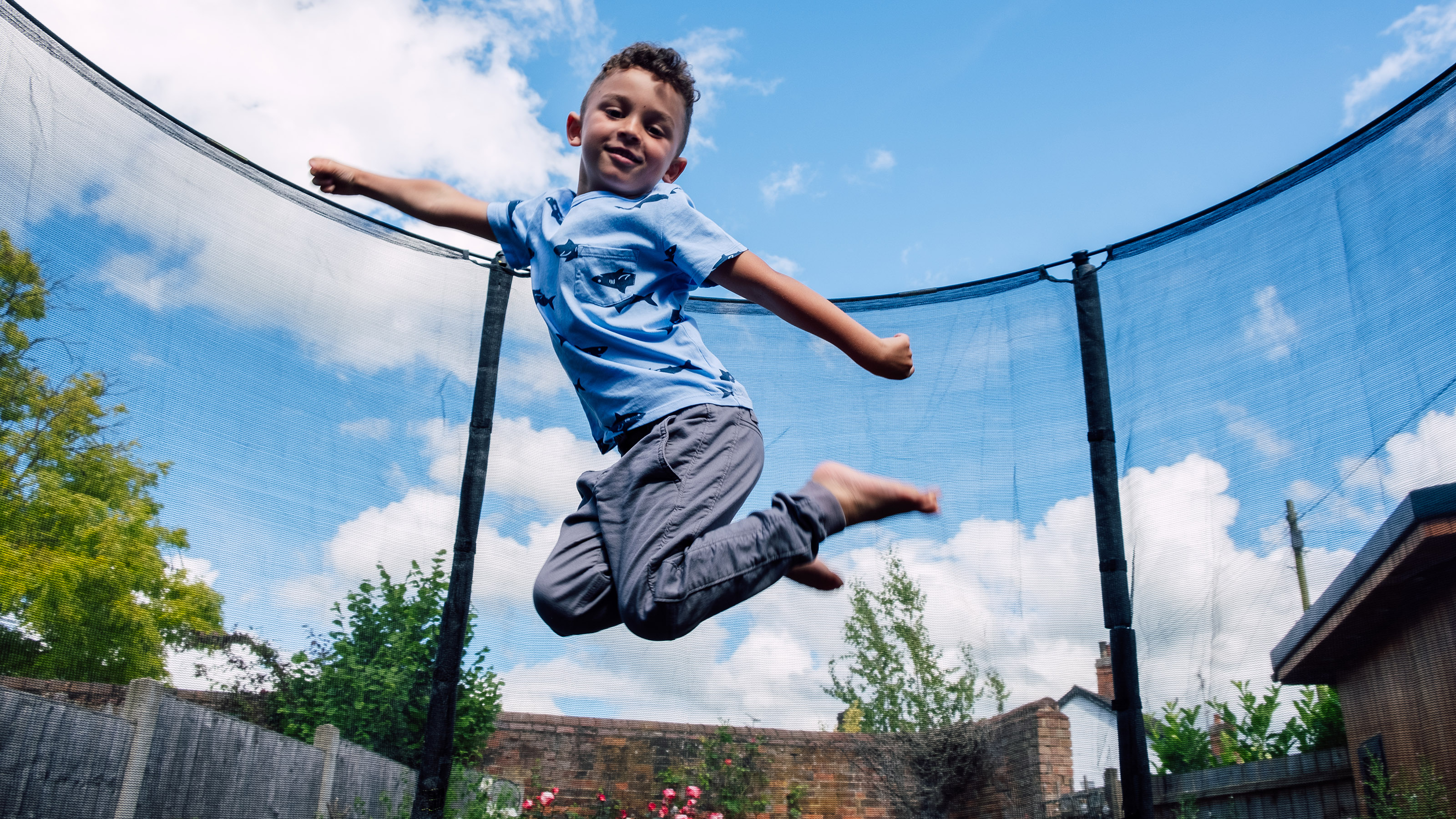
When it comes to trampoline safety, all parents will know that it's all fun and games until someone gets hurt. And whilst most trampolines will have been built with safety in mind, the experts tell us that there are certain vital things we need to be aware of as parents, to make sure the kids stay happy and accident free.
Always begin by making sure you buy a model which meets approved safety guidelines. In the US this will be ASTM F963 Standard Consumer Safety Specification for Toy Safety (for Europe look at The European Standard EN 71-14:2014).
We don't advise buying second hand unless you can be 100% sure of the provenance of the product. Buy from a source you trust and make sure you know how old the product is and if it has undergone any wear and tear.
The best thing you can do is buy the best trampoline you can afford, and make use of sales like Amazon Prime Day and Black Friday, where you can bag yourself a top quality product at a reduced price.
Next, find out how, as parents, we can create a safe environment in our backyards for children to play.
Follow these 8 trampoline safety tips from the experts
Playing on a trampoline is one of the top garden activities for kids, but they should be supervised at all times on a trampoline. 'Young children can be particularly at risk of injury on trampolines, especially if they’re playing with older kids,' says Peter Boast, Managing Director at Safetots.
Here's what else you need to consider.
1. Place your trampoline in a safe position

So you've picked out a safe and quality trampoline model, like the ASTM Approved JUMPZYLLA Trampoline With Enclosure at Amazon. The next thing to think about is where to create your garden play area. This will be somewhere the kids can be supervised at all times.
Plum Play recommend a 6.5ft (2m) safety perimeter around the trampoline to ensure it is placed away from obstructions, such as trees and outbuildings.
'Ideally, trampolines should be placed on a flat surface, ' advises David Woodman, Director of Product Development and Compliance at Plum Play.
'Also, check your trampoline warranty regarding the type of surface the trampoline should be placed on. Plum Play suggest a grassed area is best.'
'Trampolines should be secured safely in position to ensure they cannot capsize or move around,' say the experts at Garden Buildings Direct.

As well as being Director of Product Development and Compliance at Plum Play, David also sits on the British Toy and Hobby Association Safety Committee and the European Committee for Trampoline Safety. He regularly offers advice on the best ways to keep children safe when they are having fun on trampolines, along with tips on what to consider when choosing a trampoline for your child and how to use it safely once you've installed it.
2. Put up a trampoline enclosure

An enclosure is a must-have trampoline accessory for trampoline safety. So either the model you buy should have one included, or you need to buy it as an add-on separately. Do not forgo a net when buying a trampoline.
'Trampolines should always have an enclosure net,' confirms David Woodman. Always make sure the enclosure net is in good condition and zipped up.'
Malcolm Phillipps, Chief Growth Officer at Jumpflex, points out that you should also have a proper entrance point. 'Buy a quality, safety-focussed model like the ASTM Safety Compliant Jumpflex FLEX150 - 15FT Trampoline with Safety Enclosure Net, available at Amazon, and use the ladder/entrance provided. People should avoid jumping onto the trampoline from any other structure, eg. fence, house, ladder or climbing frame,' he says.
Similarly, practice a safe dismount. 'Avoid jumping directly from the trampoline to the ground, lower yourself or use a fitted ladder,' says Malcom.
3. Adhere to maximum weights

This is particularly important for events like having friends or family over. It's easy to get caught up in the excitement, and before you know it the kids have exceeded the recommended weight on your trampoline. So it's up to mom and dad to have the limits in mind.
'The Royal Society for the Prevention of Accidents has a document on its website stating that 60% of accidents on trampolines happen when more than one person is on a trampoline at one time,' says David Woodman.
'So that’s why Plum Play clearly state in their instructions that only one person should be on the trampoline at any time.'
Malcolm Phillipps advises: 'If multiple people are on the trampoline, ensure there is adequate space between bouncers and/or only one person is bouncing at a time.'
So when you buy a trampoline, keep in mind what your maximum weight restriction needs are. And if you do have a few extra guests over for a garden party, be sure to monitor them and make sure that they take turns bouncing.
4. Know your child's limits
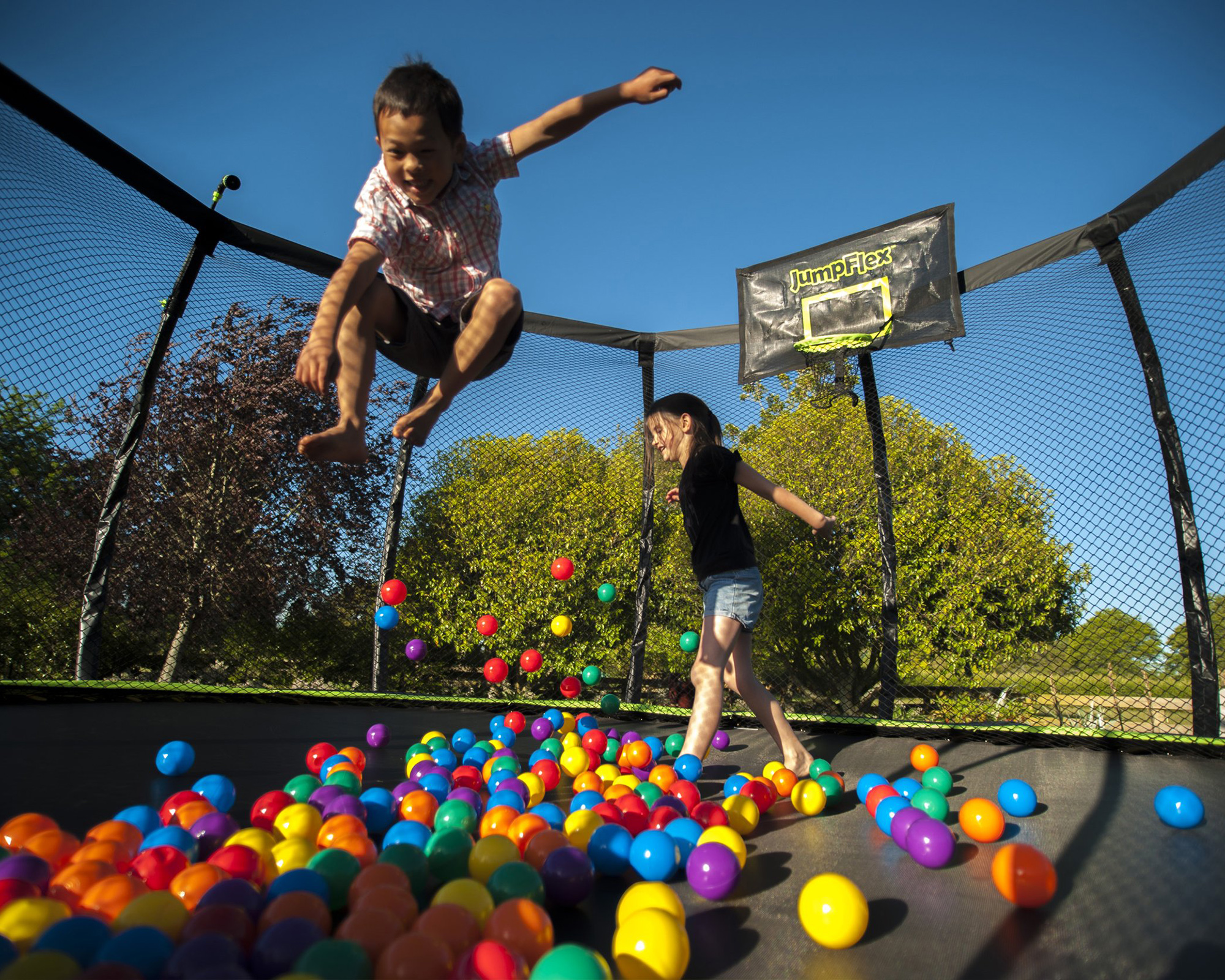
There's no reason that toddlers can't experience the joys of trampolining in a family garden. But you need to be extra careful with young kids. 'To keep them safe, it’s best to discourage them from playing on full-size trampolines,' says Peter Boast.
'Instead invest in a smaller version that’s less than 20 inches off the ground, includes a safety bar with grip, and has been designed specifically for little ones.' Try the Plum Play Baby Bouncer at Amazon.
If your kids are past the toddler age, look at Junior Trampolines which are designed for first time jumpers. 'Plum Play Junior trampolines start from 18 months; frames are low to the ground so children can easily get on and off, and springs give a controlled bounce as jumpers build confidence through trampolining,' says David Woodman.
For older children, Malcolm Phillips says tricks such as flips and somersaults should only be attempted under direct supervision by trained adults. 'Encourage bouncers to bounce within their limits and not try things that are beyond their age or trampolining skills,' he says.
5. Wear appropriate clothing on the trampoline
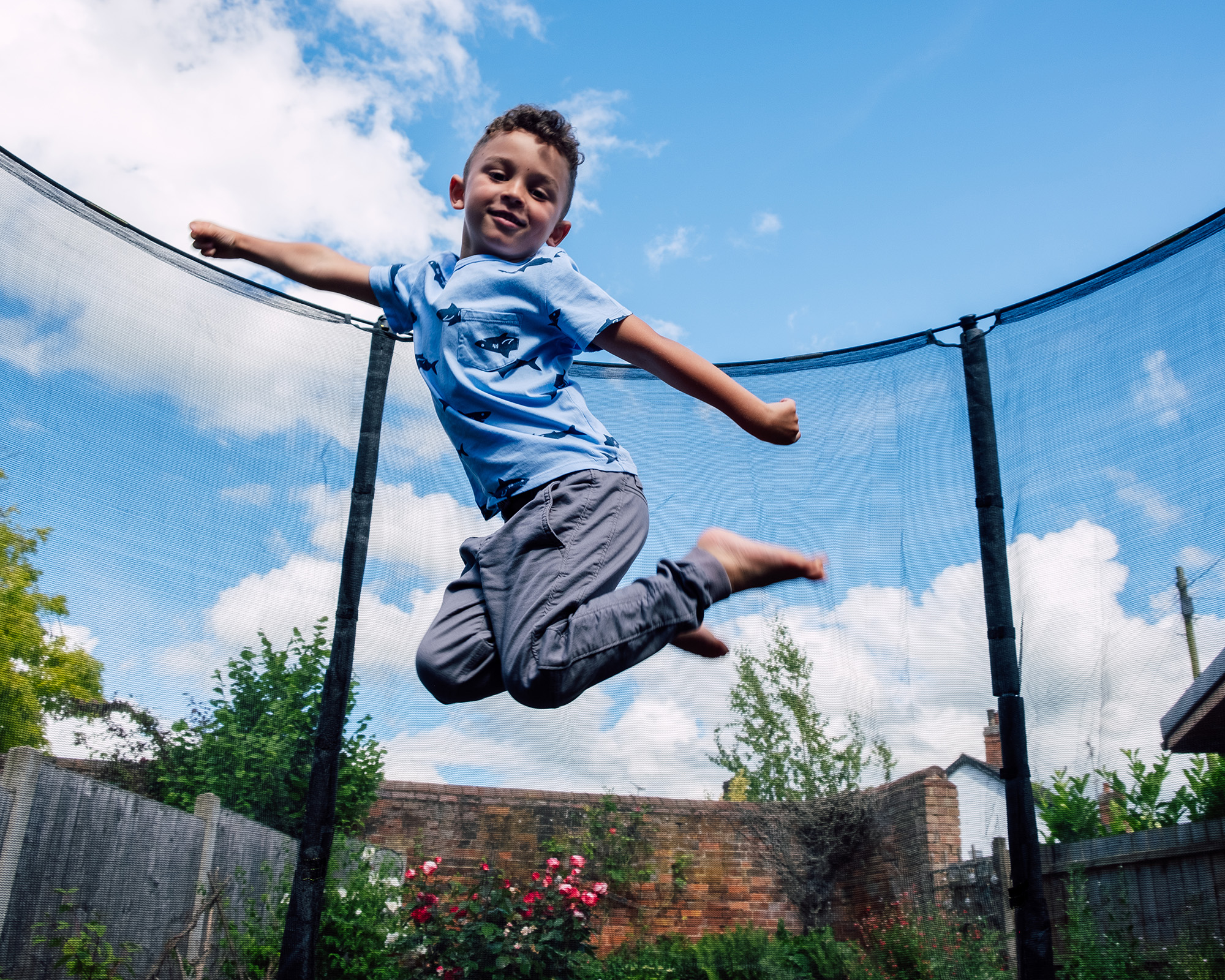
The first thing that comes to mind here is to make sure that shoes are removed before jumping on the trampoline, as these can tear the fabric. 'This also goes for clothing with hard, sharp points, buckles or anything else that could cause a hazard,' says Malcolm Phillips.
Loose, flowing clothing which children could trip on when bouncing around, can compromise trampoline safety too.
6. Be wary of poor weather
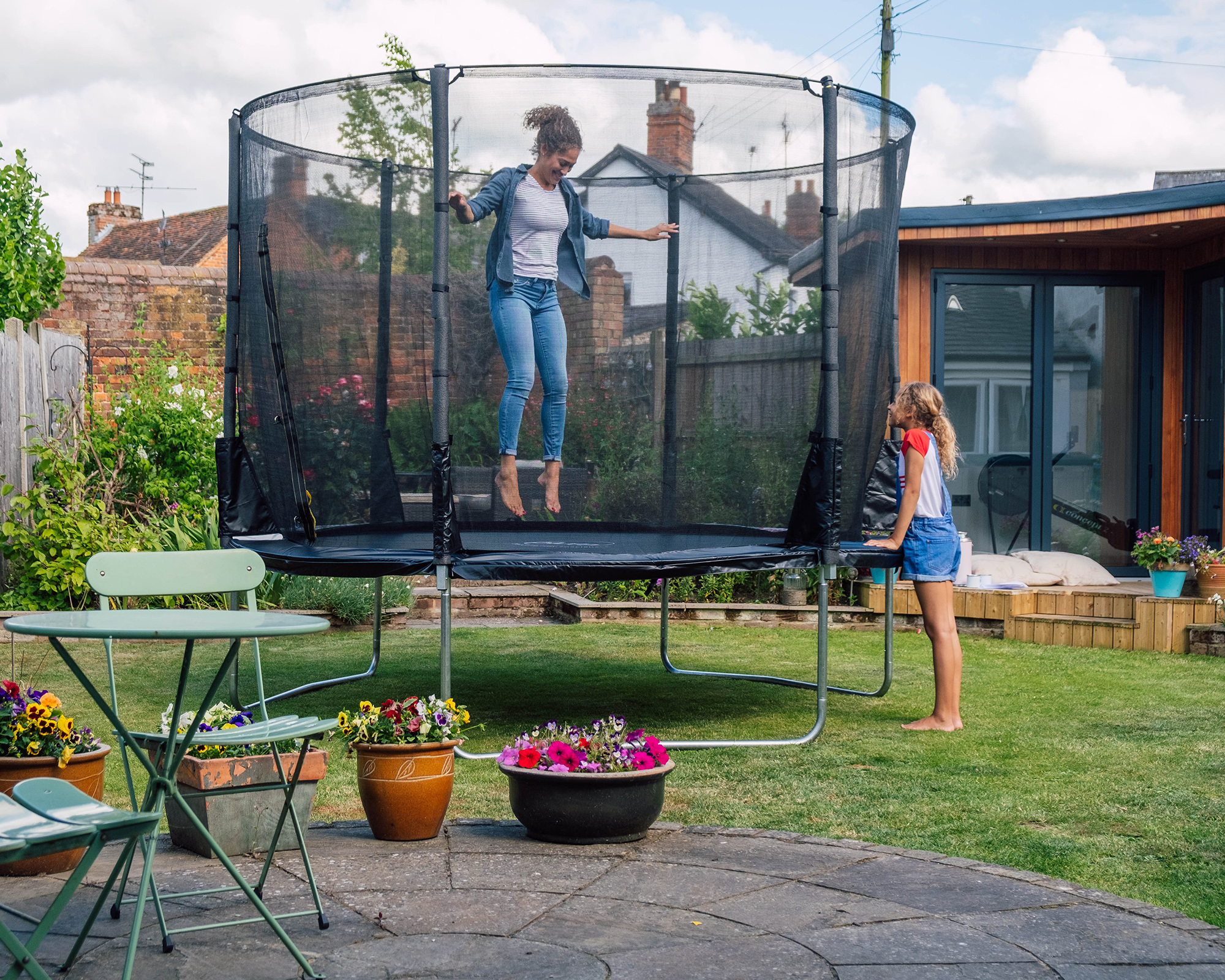
This may seem like an obvious one, but it's still worth being aware of if you're creating a child friendly garden. Malcolm advises we should exercise extra care when allowing the kids to use the trampoline when it's wet and windy.
If it's raining 'the jumping mat can become slippery,' says Malcolm. 'In periods of high wind, we advise you dismantle the trampoline to prevent damage.'
Then there's the sun. If the kids will be playing out in in the sunshine for long periods, make sure they're wearing enough SPF.
7. Keep it clean and free of mold
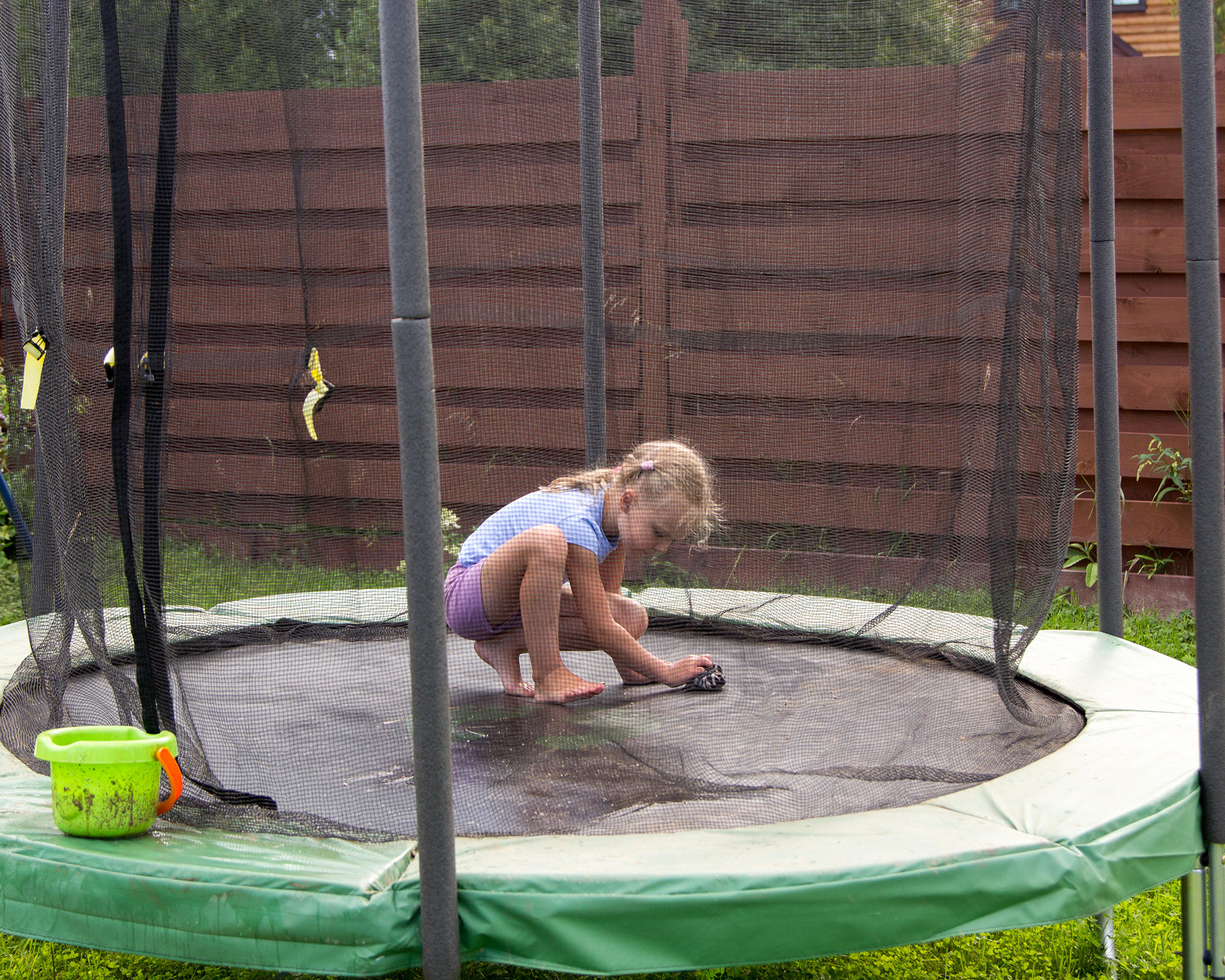
'Outdoor play equipment like trampolines and swing sets are particularly vulnerable to mold and algae build-up over the winter months,' says Rebecca Bland, spokesperson at Jeyes Fluid.
'Not only is mold unsightly, it can also be harmful to health, especially for children with allergies or health issues like asthma. Algae can make surfaces slippery, which could be hazardous for your children.'
'It might seem daunting to clean the larger outdoor items, so make it into a fun activity that the whole family can get involved in,' she says. Use a garden hose or pressure washer for a quick job.
8. Opt for in-ground options
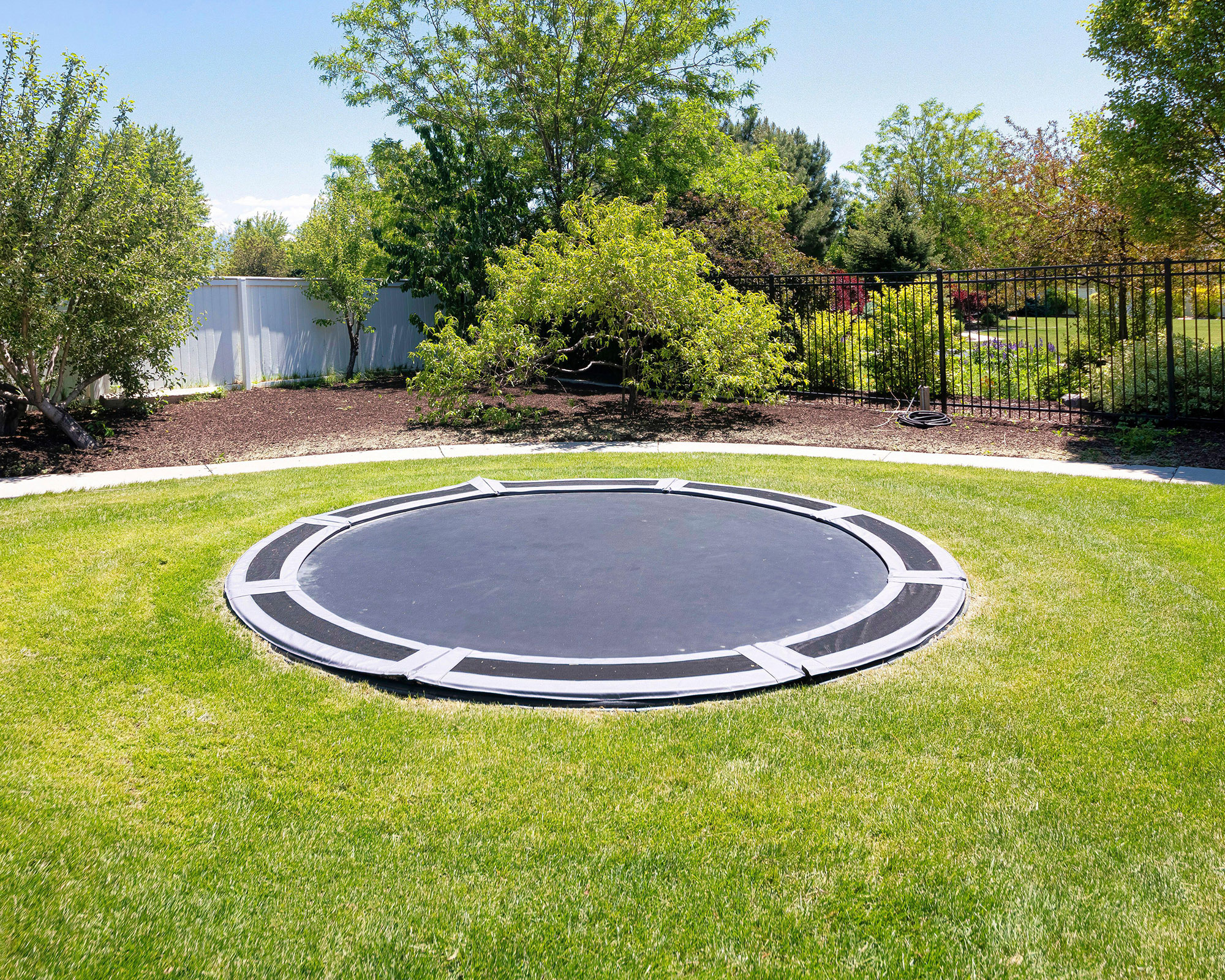
'In-ground options are often seen a safe choice, as there is no risk of falling from a height,' says David.
'In-ground options can also be more discrete but require some digging. Luckily, Plum Play offers a building service so that the equipment can be easily installed, and your family can have instant play, without the hassle of digging.'
Try the Capital Play In Ground Trampoline Kit at Amazon.
At what age are trampolines safe?
Larger junior trampolines aren't suitable for toddlers. 'This is partly because children of this age aren’t fully able to control their bouncing, putting them at a higher risk of falls or collisions with other jumper, says Peter Boast.
'Small children also tend to have softer, more fragile bones, which aren’t able to cope with the constant pressure of jumping.'
You can buy trampolines especially for toddlers of ages 18 months and above. These are much smaller, lower to the ground and have a special safety bar for gripping.
As they get older, children can advance to larger trampolines with more bounce, but they should still be supervised to prevent accidents and injuries.
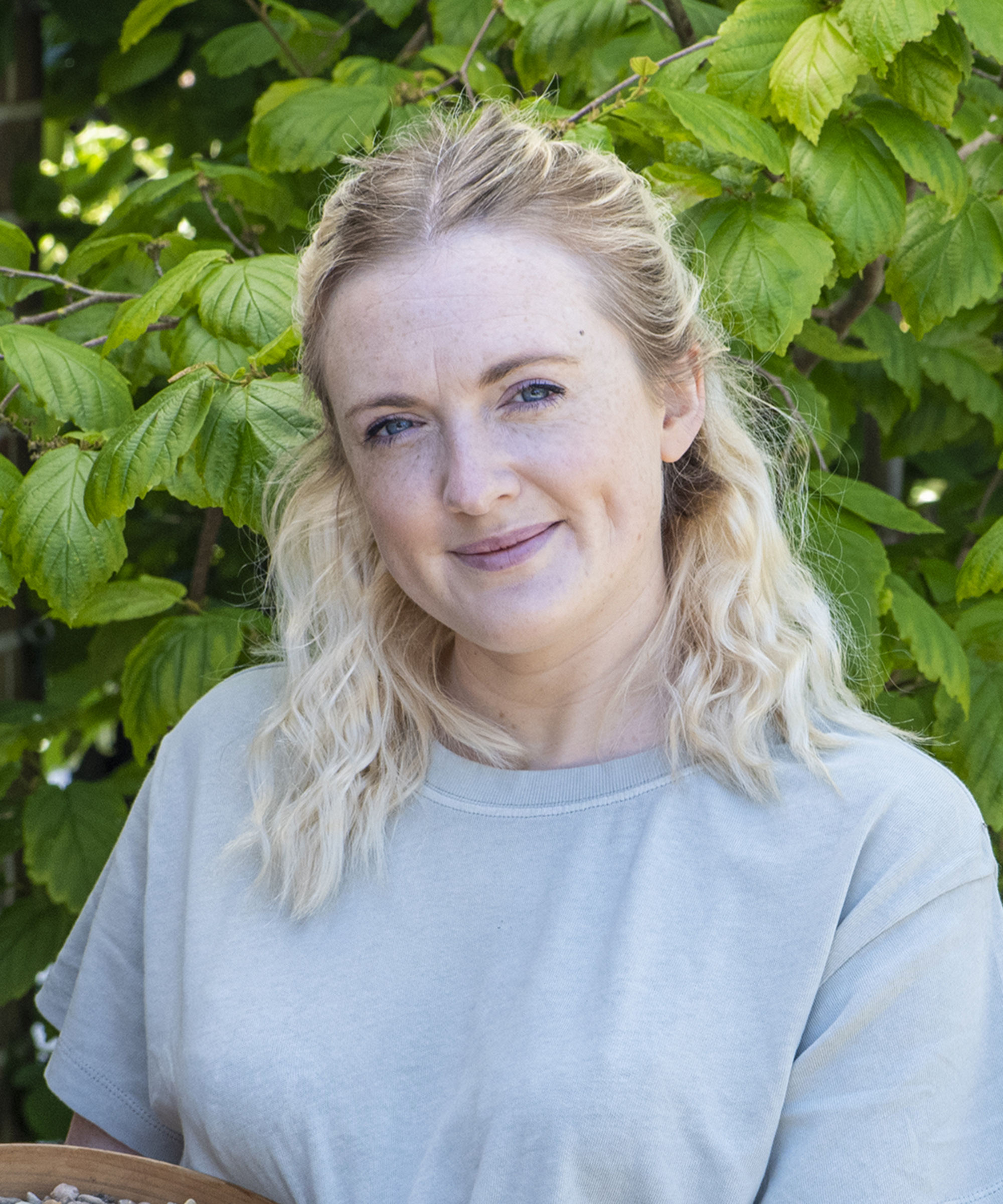
Teresa has worked as an Editor on a number of gardening magazines for three years now. So she is lucky enough to see and write about gardening across all sizes, budgets and abilities. She recently moved into her first home and the garden is a real project! Currently she is relishing planning her own design and planting schemes. What she is most passionate about when it comes to gardening are the positive effects it has on our mental health to grow and care for plants, as well as being great for the environment too and help provide food and shelter for wildlife.
